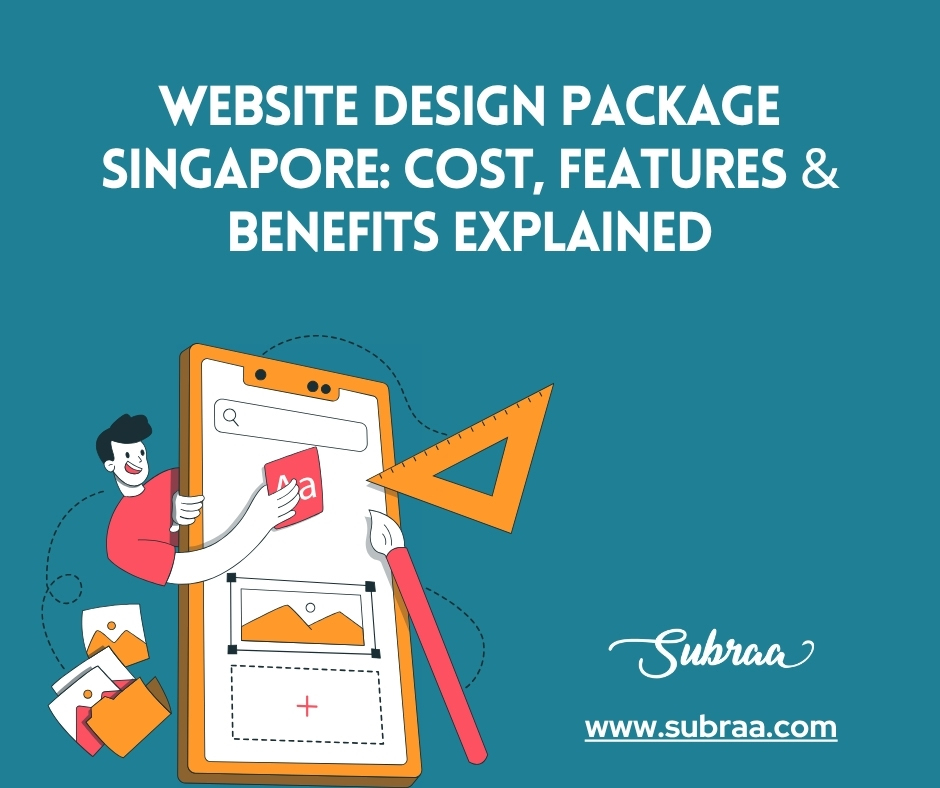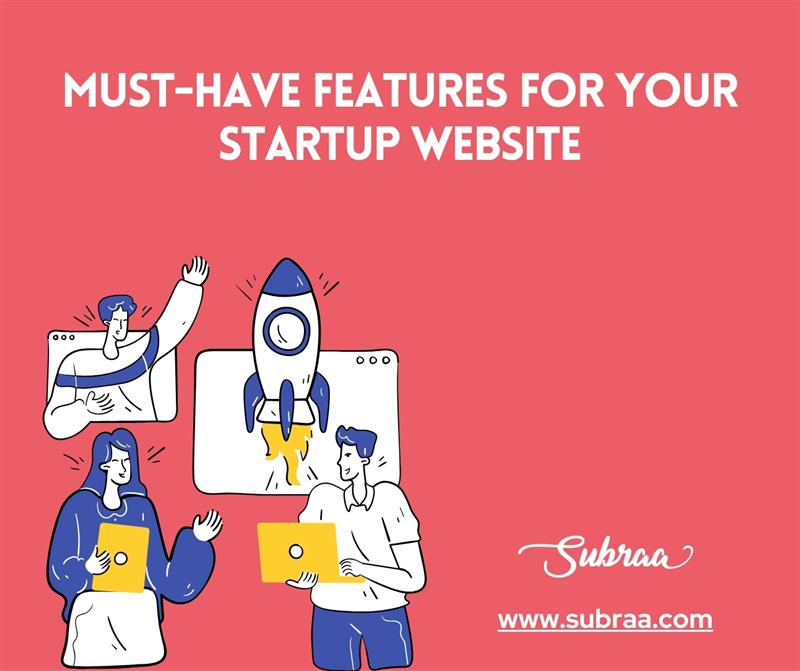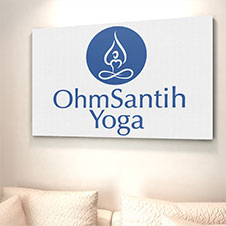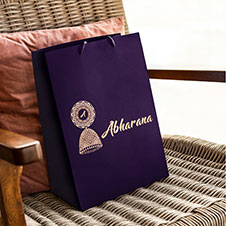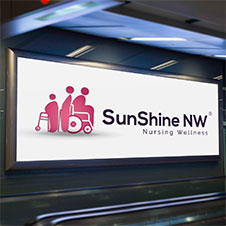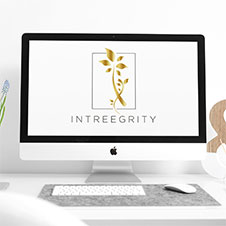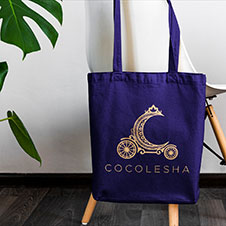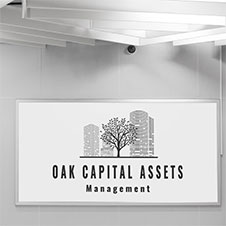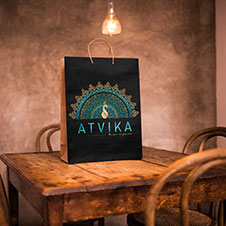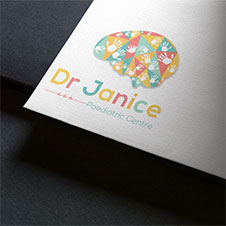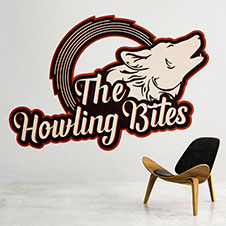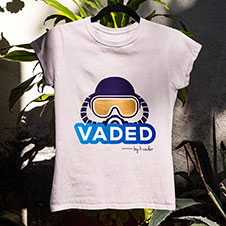Not all websites are created equal and neither are their prices. In this blog, we break down what an affordable website design package in Singapore includes, what you should look for, and why it can be the smartest investment for your business.
Brochure Sizes and Dimensions: A Complete Guide for Your Business in Singapore
Print brochures remain a timeless and powerful marketing tool, particularly for businesses in Singapore seeking to make a lasting impression. Whether you’re promoting a new product, introducing your brand, or simply educating your audience, the size and format of your brochure can significantly impact how your message is received.
It’s not just about design or visuals. The physical dimensions of a brochure determine everything, from how much content you can fit, to how it feels in hand, to how it folds and presents your information. A well-designed brochure that’s appropriately sized and formatted sends a clear message: your business is polished, professional, and pays attention to detail.
But here’s the catch: choosing the wrong size or layout can result in awkward folds, cut-off text, poor print quality, and wasted budget. That’s why understanding brochure sizes and dimensions is essential, not just for designers, but for business owners, marketers, and startup founders looking to create impactful marketing material.
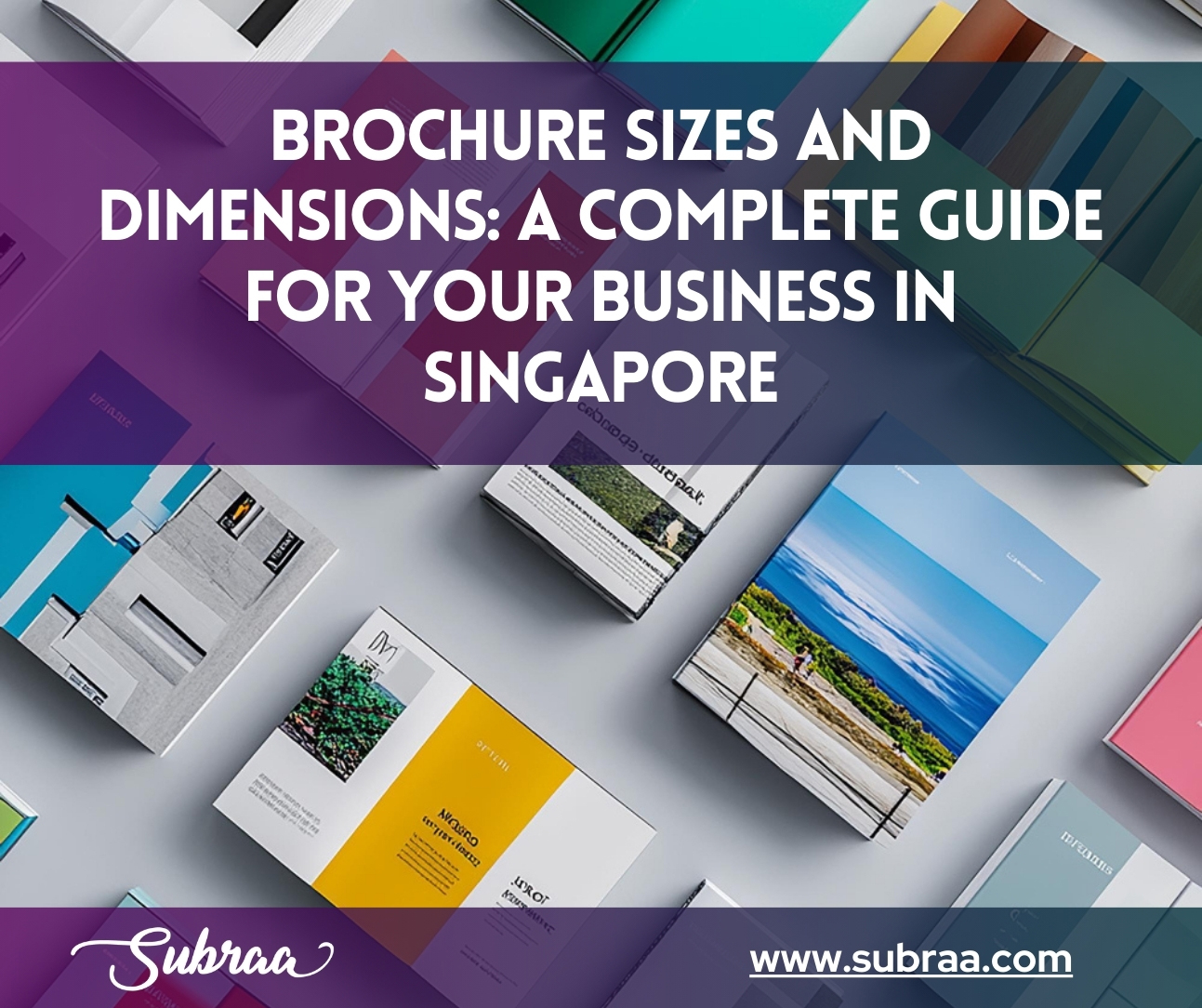
In this complete guide tailored for the Singapore market, we’ll explore:
- Standard brochure sizes commonly used in Singapore
- The impact of different fold types on your content
- Design and print setup tips to avoid common mistakes
- How to choose the right format based on your goals
- Localised brochure design tips for businesses in Singapore
And why working with a professional brochure designer can make all the difference.
Let’s dive into the world of brochure dimensions, and make sure your next print project isn’t just good, it’s great.
Common Brochure Sizes in Singapore
One of the first questions most businesses ask when planning a brochure is:
What is brochure size?
The truth is, brochure size plays a massive role in the effectiveness of your marketing material. In Singapore’s highly competitive business environment, you don’t just want a brochure that looks good; you want one that fits perfectly in your customer’s hand, displays information clearly, and doesn’t feel oversized or underwhelming.
Let’s take a look at the most common brochure sizes used in Singapore, their dimensions, and their typical applications.
Standard Brochure Sizes & Dimensions
| Brochure Size | Dimensions (mm) | Best Used For |
| A4 | 210 × 297 | Company profiles, product/service brochures, presentations |
| A5 | 148 × 210 | Event handouts, product promos, compact marketing |
| DL | 99 × 210 | Restaurant menus, promotional mailers, vouchers |
| Square (Large) | 210 × 210 | Creative industries, lookbooks, high-end marketing |
| Square (Small) | 148 × 148 | Boutique brands, social event brochures |
| Custom Sizes | Variable | Luxury branding, trade show promotions, product showcases |
Each of these brochure-size dimensions serves a specific purpose, and picking the right one depends on your content, distribution method, and brand identity.
The Popularity of the A4 Tri-Fold Brochure Size
One of the most widely used and versatile formats is the A4 tri-fold brochure size. When folded, it results in three equal panels, each approximately 99mm wide. It’s sleek, compact, and allows you to divide your content into digestible sections like:
- Introduction
- Services or features
- Contact and CTA
A4 tri-folds are ideal for company overviews, corporate event handouts, or general marketing brochures. What is the company brochure size that most businesses go for in Singapore? You guessed it, A4 tri-fold.
Use-Case-Based Recommendations
Retail & Hospitality: DL brochures are great for in-store promo displays or takeaway menus.
Startups & SMEs: A5 is cost-effective, easier to distribute at events, and gets the message across quickly.
Creative Agencies & Fashion Brands: Square brochures make a visual statement and are perfect for portfolios or lookbooks.
Corporate Presentations & Sales: Full A4 brochures with bi-fold or tri-fold format for detailed company profiles.
What Brochure Sizes Work in Singapore?
In Singapore, standard printing services are already calibrated to handle various brochure sizes, including A4, A5, and DL. These sizes also align well with local mailing standards, document folders, and print pricing tiers.
Choosing standard brochure size dimensions also means:
- Faster turnaround from local printers
- Lower production costs
- Easier file setup for designers and printers alike
Of course, custom brochure sizes are still an option if your goal is to truly stand out, but be prepared for longer lead times and slightly higher costs.
Understanding Fold Types and Their Impact on Design
Now that we’ve covered brochure-size dimensions, it’s time to talk about something equally important, fold types. Choosing the right fold is more than just an aesthetic decision; it directly affects how your content is read, understood, and remembered. Whether you’re designing a simple tri-fold or an elaborate gate-fold, your brochure’s structure should support your message, not confuse it.
Let’s walk through the most common brochure folds used in Singapore, and how each works best with different brochure sizes.
1. Tri-Fold Brochure Size (A4 Folded into 3 Panels)
- Dimensions when unfolded: 210mm × 297mm (A4)
- Each panel: ~99mm wide
This is the most popular folding style in Singapore. It divides the A4 page into three equal sections, making it ideal for:
- Corporate overviews
- Services breakdown
- Step-by-step explanations
Why it works:
- Compact and professional
- Easy to carry and distribute
- Logical content flow (intro ? core ? CTA)
- Perfect for envelope inserts or tradeshow handouts
2. Bi-Fold (Half-Fold)
- Common brochure size: A4 or A5 folded in half
- Panels: 2
Simple, clean, and perfect for:
- Event invitations
- Restaurant menus
- Short-form product brochures
Why it works:
- Larger canvas per panel
- Great for visual-heavy designs
- Less complex layout
This fold style is often used when you want more impact per page rather than many segmented sections
3. Z-Fold Brochure
- Also based on A4 brochure size
- Panels fold in a zig-zag (like an accordion)
Best for:
- Product features comparisons
- Instructional brochures
- Sequential storytelling
Why it works:
- Keeps information isolated per panel
- Readers naturally follow a step-by-step sequence
- More dynamic and interactive
4. Gate Fold
- Custom or A4 width with side panels folding inward to meet in the center
- Looks premium and dramatic
Use Cases:
- Luxury product brochures
- Fashion lookbooks
- Exclusive event invites
Why it works:
- Creates a “reveal” effect
- Excellent for showcasing a hero image or central message
- Great for experiential marketing
5. Accordion Fold / Roll Fold
- Multiple panels (4 or more) folding in one direction
- More suited for larger brochure size dimensions like A3 or custom formats
Ideal for:
- Tour guides
- Step-by-step how-to brochures
- Detailed infographics or long lists
Challenges:
- Must design carefully to ensure flow
- Risk of overcrowding or overwhelming layout
Design Considerations Per Fold
| Fold Type | Recommended Size | Design Tip |
| Tri-Fold | A4 | Use each panel for one topic or section |
| Bi-Fold | A4, A5 | Great for bold images and minimal text |
| Z-Fold | A4 | Ideal for step-by-step flows |
| Gate Fold | Custom, A4 | Create suspense and a strong reveal section |
| Accordion Fold | A3, Custom | Ensure consistency and logical sequence |
Choosing the Right Brochure Size for Your Business Goals
With numerous brochure sizes, dimensions, and fold styles to choose from, it’s easy to become overwhelmed. But here’s the thing: the best brochure isn’t the flashiest, it’s the one that aligns with your business goals and user expectations.
In this section, we’ll break down how to choose the right brochure size for your specific needs, whether you’re showcasing a company profile, promoting an event, or launching a product in Singapore.
Step 1: Define the Purpose of Your Brochure
Are you trying to:
- Educate potential clients about your services?
- Showcase your company’s achievements?
- Offer promotional discounts or vouchers?
- Introduce a new product line?
Each goal requires a different format. For example:
- A company brochure size like an A4 tri-fold allows space for detailed content and images.
- A compact DL brochure size works great for discounts or takeaway menus.
- A square format may better suit fashion brands or creative portfolios.
Step 2: Consider Your Distribution Method
How will your brochure be distributed? That affects both size and folding.
| Distribution Method | Best Brochure Size/Fold |
| Handed out at events | A5 or DL tri-fold – easy to carry |
| Mailed with letters | DL tri-fold – fits standard envelopes |
| Placed in office/clinic | A4 bi-fold or tri-fold – more space, more info |
| Luxury product handover | Square or gate fold – high impact design |
Also consider printing cost implications – standard sizes are cheaper and faster to produce.
Step 3: Think About Your Target Audience
Your brochure should feel tailored to the reader. For instance:
- Busy professionals may prefer a DL or A5 brochure that’s straight to the point
- B2B clients may expect a professional A4 brochure with technical details and case studies
- Creative industries benefit from square or custom brochure size dimensions to make a bold first impression
If your audience is likely to keep the brochure (rather than toss it), invest in better paper, finishes, and layout.
Step 4: Align Size with Budget
Let’s be real – budget matters, especially for startups and SMEs in Singapore. Here’s how different brochure sizes can impact costs:
- A5 & DL – Most affordable to print, great for bulk marketing
- A4 – Moderate cost, but professional and content-rich
- Square & Custom Sizes – Higher printing and design costs, but more impactful
Working with an experienced brochure design expert in Singapore, such as Subraa , ensures you get maximum value within your budget.
Design Considerations – Bleed, Margins, and Orientation
So, you’ve locked in the brochure size, decided on the fold, and are ready to move to the design stage. Great! But here’s the thing, without proper setup, even the most stunning layout can lead to printing nightmares.
Whether you’re working with a brochure designer in Singapore or designing in-house, it’s crucial to understand design technicalities , such as bleed, margins, orientation, and layout alignment. These details ensure your brochure looks just as great on paper as it does on screen.
1. What Is Bleed (And Why It Matters)?
Bleed refers to the extra space beyond the trim line of your brochure that gets cut off during printing. It’s essential for ensuring that your design or background color extends edge-to-edge with no white borders.
- Standard bleed size in Singapore: 3mm on all sides
- If your brochure size is A4 (210mm x 297mm), your design file should be 216mm x 303mm including bleed
Why it matters:
Without bleed, tiny variations in cutting could leave white edges – making your design look unprofessional.
2. Safe Margins: Keep Your Content Inside
While bleed is the outer area, margins are the inner safety zone. All critical content – text, logos, images – should stay inside this area to avoid being cut or misaligned.
- Safe zone size: 5–8mm inside the trimmed edge
- Avoid placing contact details, headings, or logos too close to edges
This is especially important for tri-fold brochure size and Z-folds, where panels fold over each other.
3. Orientation: Portrait vs. Landscape
Brochures can be designed in either portrait (vertical) or landscape (horizontal) orientation, depending on content flow.
- Portrait orientation is common and more familiar to readers.
- Landscape orientation feels modern, sleek, and works well for brochures that focus on visuals or wide layouts.
Best for:
- Product catalogues: Landscape
- Company profiles: Portrait
- Event brochures: Either (based on design)
4. Panel Design Considerations for Folded Brochures
For folded brochures like A4 tri fold brochure size, your design must account for:
- Each panel’s width (some inner panels may be slightly smaller to allow folding without bulging)
- Panel order and flow (front cover, inside panels, back cover)
- Fold lines, avoid placing text directly on folds
That’s why many businesses in Singapore turn to professionals like Subraa, who handle everything from layout planning to print-ready exports, ensuring zero hiccups at the printing stage.
Brochure Design Best Practices (Specific to Singapore Market)
Designing a brochure isn’t just about making it look nice – it’s about delivering your message effectively and appealing to the local audience. Singapore is a highly competitive, multicultural, and design-conscious market, so a generic brochure just won’t cut it. You’ll need to go beyond basic design elements and consider local preferences, languages, and presentation styles.
Let’s go over some key brochure design practices tailored specifically for businesses operating in Singapore.
Focus on Clarity and Simplicity
Singapore audiences are practical and often time-sensitive. This means your brochure should:
- Get to the point quickly
- Use bullet points, short paragraphs, and bold headlines
- Highlight benefits over features
- Use visuals to support – not distract from – your message
A clean layout that’s easy to skim wins over flashy, cluttered designs every time.
Align Visuals with Your Brand and Industry
In Singapore, visual professionalism is expected. Whether you’re in finance, tech, education, or wellness, your brochure should reflect:
- Your brand’s color palette
- Consistent fonts and icons
- High-quality imagery (preferably local or custom shots, not generic stock)
Example: A company brochure size A4 tri-fold for a corporate law firm should feel polished, minimal, and text-led. A square brochure for a new vegan café can be bold, image-heavy, and playful.
Include QR Codes for Digital Access
Singapore is a digitally advanced society. Adding a QR code to your brochure lets users:
- Visit your website
- Watch a product demo
- Access a promo code
- Download an e-brochure or PDF version
Ensure the QR code links to a mobile-friendly landing page. This small detail adds a high-tech edge to your print collateral.
Consistency Across Your Marketing Materials
Your brochure doesn’t live in isolation. It should feel like part of a bigger brand ecosystem, matching your:
- Web Design Singapore
- Flyer Design
- Social media visuals
- Presentation slides
If you’re using multiple brochure sizes (e.g., A5 and DL for different campaigns), ensure consistency in color, logo use, and typography.
Working with a brochure design Singapore expert like Subraa ensures your branding stays cohesive across all platforms and formats.
Choose the Right Brochure Size for Lasting Impact
Whether you’re promoting your startup, showcasing a product, or building brand awareness, the right brochure size and format can elevate your marketing game and leave a lasting impression. But size isn’t just about aesthetics – it affects usability, print quality, cost, and how well your message lands with your audience.
From the widely used A4 brochure size to custom layouts designed to impress, understanding the different brochure sizes and how they align with your business goals is key. Keep in mind the technical aspects too, like bleed, margins, folds, and local design expectations in Singapore.
A well-designed brochure reflects more than your services – it demonstrates your attention to detail, your professionalism, and your commitment to delivering value.
Why Choose Subraa for Brochure Design in Singapore?
Creating a professional, print-ready brochure takes more than picking a template. With Subraa, you get:
- Expert advice on brochure size dimensions, folds, and layouts
- Custom designs that align with your brand identity
- Print-ready files prepared with correct bleed, color modes, and formatting
- Affordable, high-quality brochure design Singapore businesses trust
Whether you’re just starting out or refreshing your marketing materials, Subraa ensures your brochure works just as hard as you do.
Ready to design brochure that convert? Contact Subraa today for a free consultation.
Brochure Sizes and Dimensions: Frequently Asked Questions (FAQ)
- What are the standard dimensions for a brochure?
The most common brochure sizes are A4 (210 x 297 mm) or A5 (148 x 210 mm). These sizes are widely used and work well for most business needs in Singapore. - What is the average size of a brochure?
Typically, brochures are printed on A4 (210 x 297 mm) or A5 (148 x 210 mm) paper. This provides ample space for both images and information, making it a popular choice in Singapore. - How many pages does a typical brochure contain?
Most brochures range from 4 to 12 pages, depending on the amount of content you want to include and the type of fold used. - Is it possible for a brochure to consist of only two pages?
Yes, definitely! A simple bi-fold brochure is a single sheet folded in half, providing two pages (front and back). - What are the commonly accepted brochure sizes in the industry?
Besides A4 (210 x 297 mm), other standard sizes include 8.5 x 14 inches (Legal), 5.5 x 8.5 inches (Half Letter), and A5 (148 x 210 mm). - How many pages are recommended for an effective brochure?
For most purposes, a brochure with 4, 6, or 8 pages is effective. For example, a tri-fold brochure has six panels – three on each side of the sheet. - What is considered the normal or typical brochure size?
The standard or “go-to” size is A4 (210 x 297 mm) or A5 (148 x 210 mm). This format is familiar to most readers and easy to handle. - What different brochure sizes are available?
There’s a wide range of brochure sizes available, such as:- A4 (210 x 297 mm)
- Legal (8.5 x 14 inches)
- Half Letter (5.5 x 8.5 inches)
- A5 (148 x 210 mm)
- Custom sizes to suit your designWhat is the most suitable size for a brochure?
The ideal size depends on your content and how you plan to distribute the brochure. Still, A4 (210 x 297 mm) or A5 (148 x 210 mm) are usually the safest bets for versatility. - What is generally regarded as the best size for a brochure?
For most businesses, the standard sizes are A4 (210 x 297 mm) or A5 (148 x 210 mm). These sizes make it easy to print, design, and share your content. - What paper sizes are typically used for brochures?
The most common paper sizes are A4 (210 x 297 mm), A5 (148 x 210 mm), and sometimes Legal size. - What are the standard brochure dimensions in pixels for digital use?
If you’re creating a brochure for digital viewing or print, an 8.5 x 11-inch brochure at 300 DPI would be 2550 x 3300 pixels. For A4 (210 x 297 mm) at 300 DPI, use a resolution of 2480 x 3508 pixels. - What is the standard size for a tri-fold brochure?
A standard tri-fold brochure uses an A4 (210 x 297 mm) or A5 (148 x 210 mm) sheet, folded into three panels. - What is the standard size for a bi-fold brochure?
Bi-fold brochures are also typically made from an A4 (210 x 297 mm) or A5 (148 x 210 mm) sheet, folded in half to create two panels. - Are brochures typically printed in A4 or A5 size?
Both A4 (210 x 297 mm) and A5 (148 x 210 mm) sizes are used for brochures. A4 is more common for detailed brochures with more content, while A5 works well for compact, easy-to-carry brochures.


